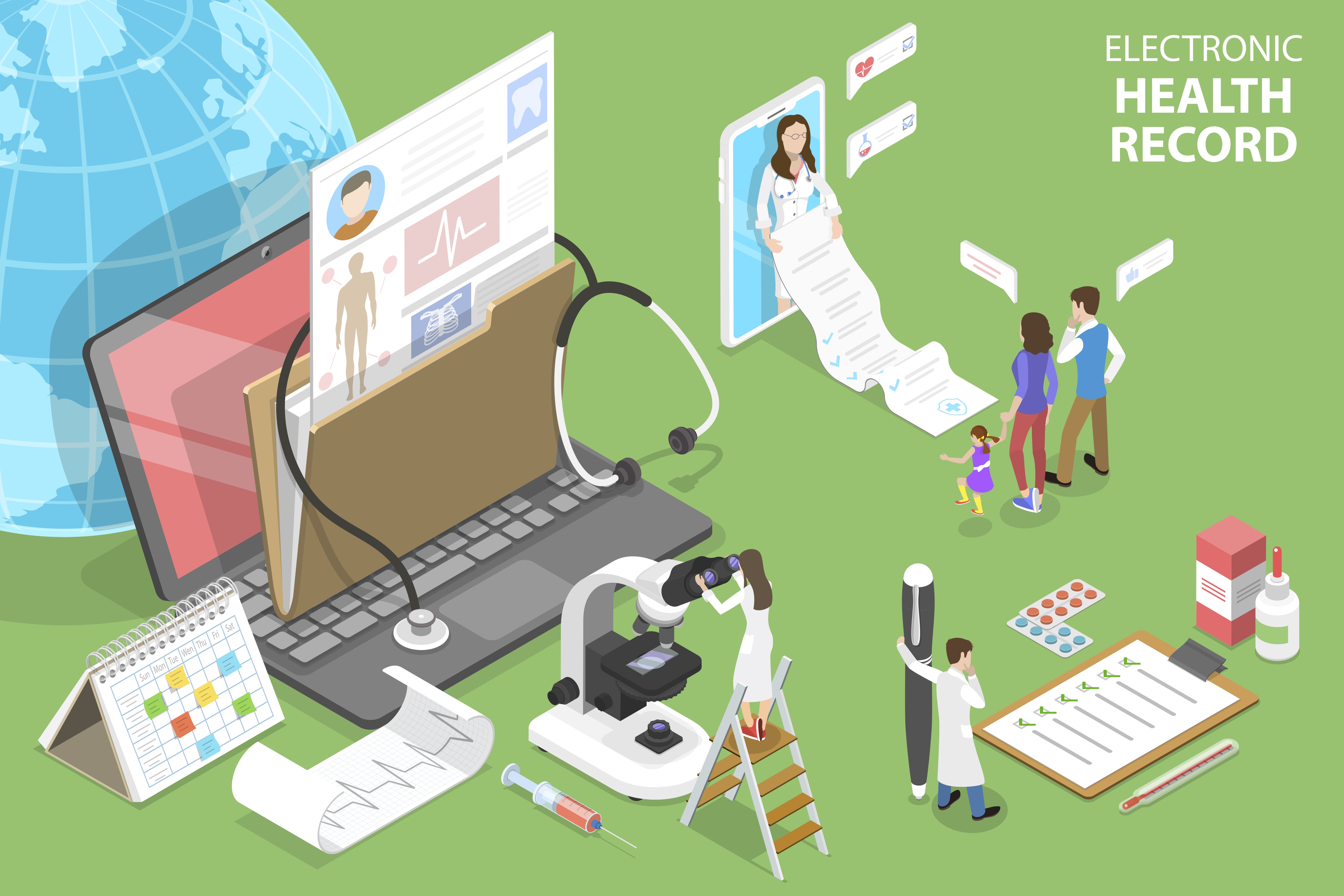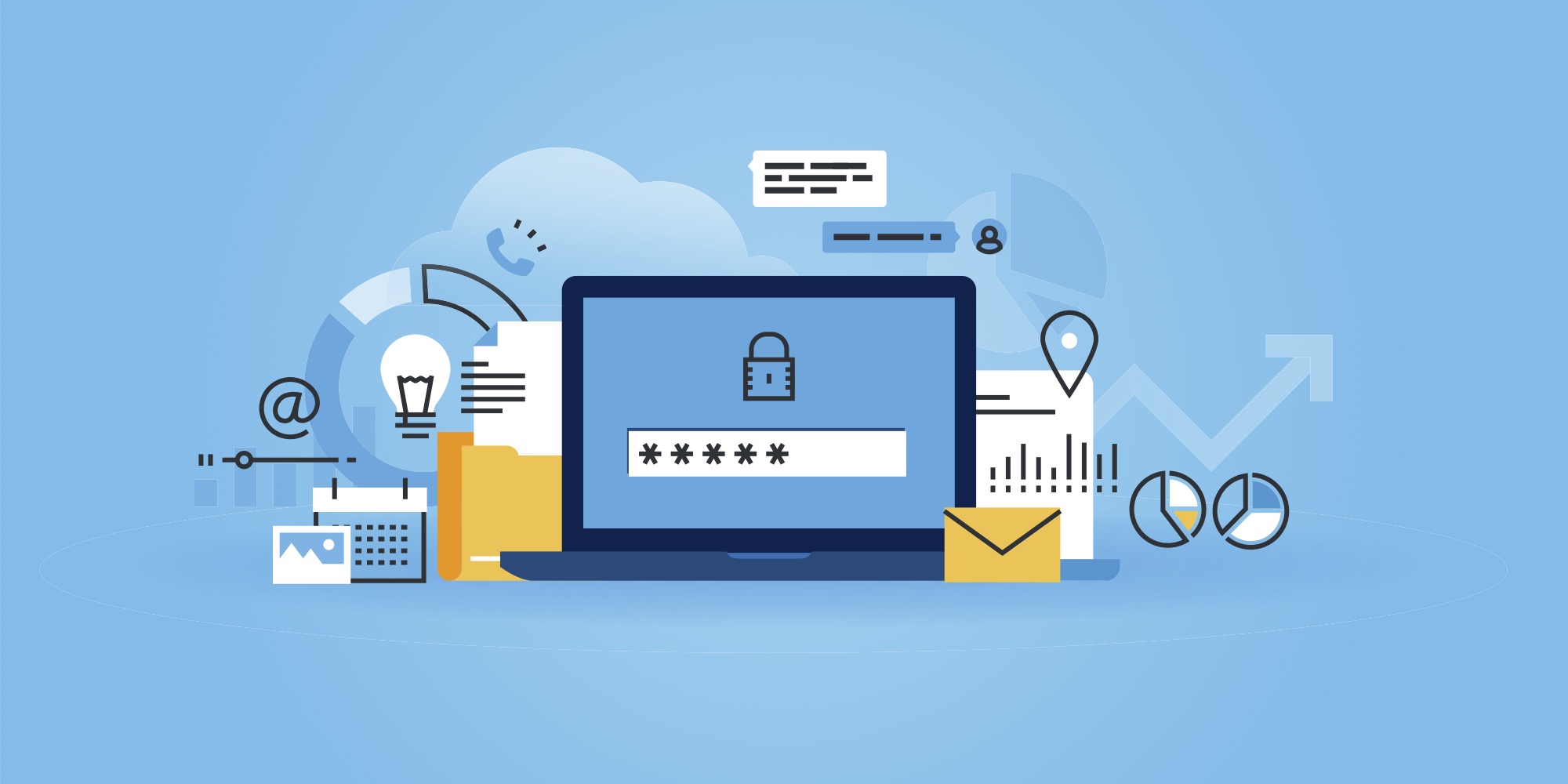The physical therapy (PT) industry is on a growth path that will continue despite the impact of the global pandemic. A market report sees the sector growing by $3.21 billion in the 2020-2024 period.
The US market for physical therapists, measured by revenue, is expected to be worth $33.9 billion in 2021. This figure does not include the market for allied services like equipment and software, which could be just as big. In 2020, the US home rehabilitation products and services market had an estimated value of $28.8 billion. The corresponding global valuation is $99.6 billion.
But let’s stop thinking numbers and focus on what’s really important. At the center of this is the physical therapist’s practice. Like everyone else, PT clinics have had to adapt to the lockdowns and social distancing rules that followed the COVID-19 outbreak. As a result, they want digital solutions that enable them to offer remote services — like telehealth — and make any necessary in-person treatments safer.
Let’s take a look at what PT clinics need to develop software solutions for physiotherapy practice and management and discuss the practice of integrating telehealth features with PT software.
Our thoughts

A digital solution for your PT business requires a modern EMR (Electronic Medical Record) or an EHR (Electronic Health Record) system. Both are near-universal medical database software products that make it easy to collect, analyze, and share clinical records.
EMRs are digital medical charts used in hospitals and clinics. They are useful for tracking data over a long period; the data that can be used to improve the quality of healthcare. EHRs go beyond simply storing clinical data. They feature an element of data interoperability, allowing information to be shared between doctors, hospitals, and other healthcare services. Developing physical therapy software is enhanced by these systems.
In addition to an EMR/EHR system, you also need PM (Practice Management) software — the former manages the clinical side of things, while the latter manages administrative tasks. The ideal application would integrate both.
Why develop physical therapy software rather than use existing EMR/EHR systems?
Physiotherapy consultations are somewhat different from an average hospital visit. As a result, existing EMR/EHR software systems might not be as useful for your practice. For example, insurance coverage might come with caveats. Or you might need greater control of the EMR to plan long-term therapy sessions.
Developing or adapting your EMR/EHR system to the needs of a physical therapy practice is the best way to maximize the efficiency of a digital solution.
What is the fastest way to build an EMR/EHR for physical therapy?
The fastest way would be to start with your existing application and adapt it to the needs of physical therapy. For instance, you can integrate EMR/EHR systems if you’re not using one already. Or you might want to add video support for remote therapy sessions. Not all EMR/EHR systems are easy to customize, though, so you’ll need an experienced developer or vendor to decide this.
Benefits of adopting physical therapy software

The CDC estimates that 85.9% of office-based physicians use an EMR/EHR system. The World Health Organization reports that “there has been a steady growth in the adoption of national electronic health record systems over the past 15 years.” Their use has increased by 46% globally in the last five years, but adoption rates are much higher in developed economies like the US and the European Union.
A similar utility can be expected with software customized for a physiotherapy practice. Developing an EMR for physical therapy can help you maintain and access years of records, while EHR development will make sharing of this data possible.
Focused on physical therapy
Physical therapy is a speciality, and the software you use should be configured for your business needs. You don’t need to develop it from scratch, but integrating an EMR/EHR system with your practice management software will make your administrative processes more efficient.
Efficiency means many things, including:
-
Fewer errors in billing and invoicing as the process is digitized and automated
-
Easier submission of insurance claims as all records are digitized and accessible anytime
-
Faster access to patient records for everyone authorized to do so
-
Leading-edge data analytics to assess patient progress and the impact of therapy
Software focused on your industry also helps with relevant regulations. A software product that stores or shares protected health information is subject to regulatory compliance. This could mean the Health Insurance Portability Accountability Act (HIPAA) in the US, the General Data Protection Regulation (GDPR) in the European Union, or the Data Protection Act in the UK. Software for your PT business should be built or customized to meet these requirements.
You will also benefit from custom features and third-party solutions that keep your practice agile and responsive to changing customer needs. You can even move to a digital-only platform that does everything from scheduling to payments.
Streamline patient experience
An integrated software solution makes it easier for your patients as well. They can manage appointments, reschedule sessions, make payments, access medical records, and even choose telemedicine on a single patient portal. This is because EMR/EHR systems are designed to track and use data efficiently.
If patients are given an easy tool to manage their relationship with your practice, that means staff time and effort is saved. It reduces delays because you no longer have to wait for patients to bring in paperwork, change appointments over the phone, or manually track payment information. You can also automate routine and repetitive aspects of your business, like exercise reminders and session feedback.
Additionally, increased user involvement would make it easier to track patient records with EMR/EHR integration. You won’t have to ask patients to provide medical records more than once. Changes and updates can be done online. This can also reduce the risk of errors and discrepancies in medical records.
Improving your business
Your physiotherapy practice is a business. Like any successful venture, you need data to improve your marketing strategy. A customized solution enables you to add marketing tools that focus on what matters to your business.
This means you can use the same software to implement and follow up on marketing efforts, identify successful marketing channels, provide referral benefits, and so on. With the right tools, you can get more from your existing marketing budget.
Upgrading your current solution with new features

Moving from your current workflow to an entirely new system is disruptive and might not be justified by incremental improvements to your business. Instead, you can always choose to upgrade your existing software to leverage EMR/EHS developments or other leading-edge services in the market.
Custom integration
Integrate custom features when you want to streamline processes. For example, developing practice management software would be more expensive and take time-consuming than integrating your EMR/EHR system with an existing practice management system. Custom integration also allows you to add new functions based on changing requirements.
For example, your scheduling system and your EMR system could be integrated. This would give the therapist access to digital medical records based on the sessions scheduled for the day. Or you might want to provide a patient with access to an interactive exercise library based on therapist recommendations.
Third-party integrations
There are existing solutions that can make practice management better, but it doesn’t always make sense to use a separate software product to add functionality. Fortunately, modern services are often built to work with each other through application program interfaces (APIs). A skilled software engineer can integrate third-party services to make it feel like a native function.
For example, PT practices might want to tie in with home therapy equipment manufacturers or hospitals so that the patient is not redirected to another website or mobile application. As long as you follow regulatory compliance and privacy laws, you can offer a bouquet of services through business partners.
Telehealth integration

The physical therapy businesses might not have focused on telehealth before the global pandemic and the restrictions on in-person sessions. According to a survey by the American Physical Therapy Association, only 2% of physical therapists provided live video consults before the pandemic. This figure increased to 50% during the pandemic.
Telerehabilitation and virtual consultations may now become regular features of physical therapy practices. This would require improved data access, seamless video streaming, and innovative interactive features.
While the urgent need might be new, telemedicine software is not untested. So you can comfortably integrate telehealth features with your PT software using the existing solutions. This will save you the cost of developing telehealth physical therapy software from scratch. For example, even general video calling services like Zoom and Microsoft Teams have added telehealth features — like EHR integration — that are GDPR and HIPAA compliant.
Building custom physical therapy software

If the nature and scope of your business require custom software development, we at Demigos use the tried and tested technologies and frameworks. Here’s a closer look at the user experience we can provide and the tech stack that makes it possible.
UX/UI
Your physical therapy application should ideally be a single point of reference. The patient would want a single dashboard that provides intuitive access to scheduling and billing information, medical records, and any value-added service you wish to provide. In short, the complete user journey needs to be accessible from the same dashboard.
Patients also represent a range of user types. This could include people who are not comfortable with digital applications and need a simple, user-friendly UI. In addition, telehealth services represent a challenge in offering a seamless consultation.
On the other side, it is just as important to choose a UX/UI design that helps therapists do their job more efficiently. Therapists represent a more uniform use case, and it would be best to optimize for it. For instance, they need to be able to work with EMRs or EHRs with ease and access it during consultations.
Tech stack
There are many approaches, languages, and frameworks that can be used. At Demigos, we use Python for backend development, React for web development, and React Native for mobile development.
We work with Python as it allows us to deliver a working application in a relatively short period. It is also an incredibly versatile programming language. React is just as great for rapid development and has a large community supported by Facebook. It’s a proven framework, with even large enterprises using it for web development.
React Native is an impressive cross-platform tool for mobile development, meaning it can be used to build both Android and iOS applications. This allows developing both apps simultaneously, saving up to 30% of the cost of building separate native applications.
In addition, since we use React and React Native as a bundle, some components can be reused, meaning a component that is similar for both the web and the mobile product doesn’t have to be built twice. Hence, the velocity of development.
Read also about custom healthcare staffing solution development and homecare giver scheduling software development.
Must-have features for physical therapy software

PT software features can be divided into clinical and administrative. You need a solution that addresses the needs of managing a PT business and the interactions between patients and physical therapists.
Some essential clinical requirements include:
-
Tracking treatment and medical records. Therapists need access to critical data points to plan treatments and make accurate assessments. They should also be able to work with HIPAA compliant electronic documentation, make progress notes, and have information automatically saved to the EMR/EHR system. This data will also update patients on the progress of their rehab and recovery.
-
Instructional and interactive features. PT software needs to be able to host content that will appropriately supplement in-person sessions. This could include an exercise library that guides patients on what needs to be done at home, medical blogs, or a planner a patient can use to keep track of their treatment.
-
Real-time chat. Patients need a way to be in touch with their therapists in a timely manner to address any concerns they may have. For example, if they experience a sudden increase in pain or if there’s unexpected soreness after a session. This can be limited to business hours.
-
Telehealth. Remote consultations are here to stay. That means you need to prepare for intuitive video and other features that make telehealth feel as ‘real’ as possible.
Important administrative features include:
-
Scheduling. Your system must make it easy to schedule appointments, make changes, and cancel bookings. Appointment management for a busy office can be a messy process without an integrated software solution.
-
Billing and payments. The billing and invoicing system should include solutions that make it easy for insurers to cover physiotherapy. The more flexible and integrated the payment solutions you offer, the easier it is for your clients.
-
Financial analysis and customer management. If the solution has integrated practice management, the data can be used to analyze your business. It also facilitates the automation of customer relationship management.
-
Feedback. Client feedback is critical for improving your services.
Developing an app

A desktop client may be unavoidable for office administrative purposes, but that’s not the case with a patient portal. Mobile devices are quickly outpacing the use of desktops and laptops. Similarly, Android and iOS are competing with desktop operating systems for the average user. Physical therapy app development would be one way to get your practice noticed.
Choosing a mobile over a web app as your patient portal is a forward-looking decision. It can make your digital solution easier to use and more appealing to patients. An app is also likely to be adopted faster than a web-based portal.
The use of tablets and smartphones is on the rise in hospitals and clinics as well. This gives healthcare providers a portable device they can take during consultations and home visits. The same is true for physical therapists. However, the extra cost might not make sense for your business.
Choosing a reliable vendor

We’ve stressed how important customized software is because of the nature of the physical therapy practice. It is also important to acknowledge that the customization is only as good as the vendor you choose. The developer should make the process of EHR migrating as seamless as possible.
Poor customization could mean years of inefficiency or the loss of your investment. So take your time doing the research. Make sure to select a company that meets the requirements identified below.
Industry experience
A healthcare business is different from other enterprises because of the nature of the data that is being collected. Medical data needs to be handled delicately. The laws are strict and vary depending on where you operate. EMR/EHR databases require an engineer who has experience developing healthtech solutions. Industry experience also brings insight that will make the process much faster. Software solutions for physiotherapy practice management need to work well from day one of implementation.
Technical insight
Make sure you have the relevant skill sets at your disposal. You need great software developers who are familiar with the right tech stack. It would also help to have consultants or advisors with experience in healthcare. These skill sets will help build products that are future-proof and easier to scale, or will at least allow you to make an informed decision about what is necessary right now. If you’re not thinking long-term now, you might end up having to develop or customize the solution again just a few years down the line.
Cost of development
Determining the appropriate cost is the most difficult decision to make. You can’t simply choose the cheapest option, and you also can’t authorize a budget that might take years to show dividends. It’s critical to find a vendor that meets your business needs.
Insist on developing all features that have an immediate impact. Anything you do regularly in the course of your business needs to be integrated into the application you’re building. But make sure you let the experts have their say. For example, UI/UX design takes time, and money, but even with your business knowledge, it’s difficult to predict the most intuitive UX if you haven’t designed software.
Application security
Since you’re likely to be using EMR/EHR systems, security is especially important. One breach could mean the end of your business. You need to select a software development vendor with experience in implementing secure systems and one that prioritizes them. Development needs to be done within GDPR and HIPAA-compliant frameworks.
Great product management
For the smoothest process, the team needs to have a great product manager who can cooperate with you. The cultural fit might not be as tangible as technical skills, but it is just as important. Software development can take time and it will require a team that communicates effectively. This is heavily influenced by the product manager. So spend time with the person who’ll helm the project for you. Look for the dedication that matches your own.
The bottom line

A custom software solution is about making both an immediate and a lasting business impact, and the benefits are apparent in the healthcare industry. With regulatory guidelines and unique use cases to consider, software development solutions for physical therapists, athletic trainers, and chiropractors are specialized products. The best physical therapy EMR and EHR systems can enhance your business by uncovering clinical insights and business trends in an integrated solution.
It’s also easy to get it wrong.
So, if you’re interested in physical therapy EMR development, consider Demigos — an experienced vendor specializing in healthtech. We develop EMR/EHR solutions that can be integrated with a versatile practice management system.
Are you thinking of adding telehealth services? Our custom integrations are designed for a seamless transition. Or we can work with you to create a physical therapy app for patients that can make telerehabilitation more intuitive and improve customer acquisition and retention. Either way, we’d be happy to combine our experience with your idea.






